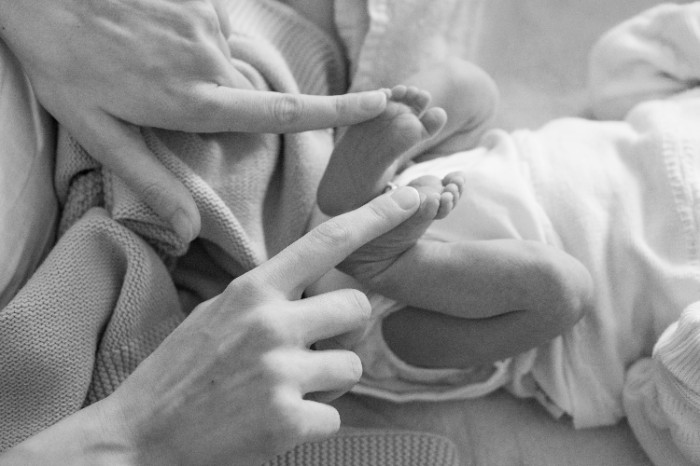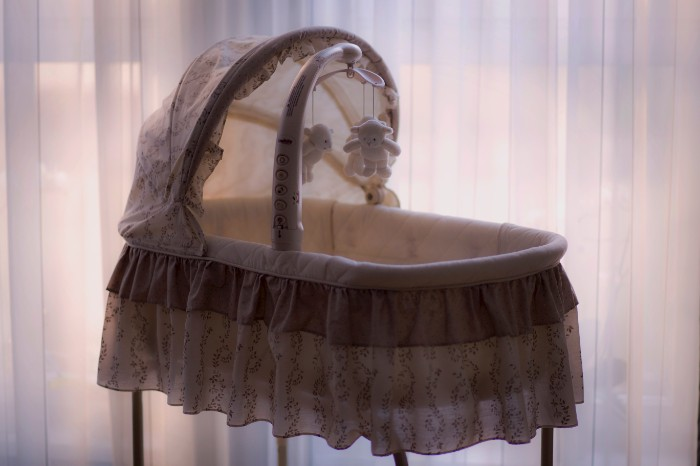Introduction: The Art of Swaddling
Swaddling is an age-old practice that involves wrapping your baby snugly in a blanket. This technique mimics the comfort and security of the womb, helping your baby to feel safe and secure. This blog post will delve into the art of swaddling, helping you understand its basics and benefits.
- Understanding the Basics of Swaddling
Swaddling is a simple technique that involves wrapping your baby in a blanket in such a way that only their head is exposed. The idea is to create a womb-like environment that makes your baby feel secure and comfortable. Here’s a simple step-by-step guide on how to swaddle your baby:
- Spread out the swaddle blanket, positioning it like a diamond.
- Place your baby face-up on the blanket, with their head above the top edge.
- Take the left corner of the blanket and wrap it over your baby’s body, tucking it beneath them.
- Bring the bottom corner up over your baby’s feet.
- Wrap the right corner around your baby, tucking it in securely.
Remember, the swaddle should be snug but not too tight. Your baby should still be able to move their hips and legs freely.
- Benefits of Swaddling Your Baby
Swaddling offers numerous benefits for both babies and parents. Here are a few:
- Improved Sleep: Swaddling can help your baby sleep longer and more peacefully by preventing the startle reflex that can wake them up.
- Comfort and Security: The snug wrap mimics the womb, providing comfort and a sense of security to your baby.
- Reduced Crying: Studies have shown that swaddling can reduce crying in infants, especially in the evenings when colic tends to peak.
- Eases Transition: Swaddling can help ease the transition from womb to world for your newborn, making them feel more comfortable in their new environment.
Swaddling is a powerful tool in a parent’s arsenal. However, it’s important to swaddle correctly to ensure your baby’s safety and comfort. Stay tuned for more insights on swaddling and other baby care techniques.

Signs Your Baby Doesn’t Want to Be Swaddled
Swaddling is a time-honored practice that can provide comfort and security to your baby. However, not all babies enjoy being swaddled. Recognizing the signs that your baby may not want to be swaddled is crucial. This can help ensure your baby’s comfort and well-being. Here are some key signs to look out for:
-
- Recognizing discomfort in your baby
Discomfort can manifest in various ways. These could be signs of discomfort if your baby is constantly crying, fussing, or struggling to get out of the swaddle. Also, if your baby is unable to settle down or sleep while swaddling, this could indicate that they are not comfortable. It’s important to remember that every baby is unique, and what works for one may not work for another. Studies have shown that some babies simply do not enjoy the sensation of being swaddled and may respond better to other forms of comfort.
-
- Understanding your baby’s body language
Babies communicate primarily through body language. If your baby is often trying to break free from the swaddle or if they seem restless or agitated while swaddled, these could be signs that they do not want to be swaddled. Additionally, if your baby seems happier and more relaxed when not swaddled, this could be a clear indication that swaddling is not for them. Research suggests that understanding your baby’s body language can greatly aid in determining their comfort levels and preferences.
Remember, the ultimate goal is to ensure your baby’s comfort and happiness. If swaddling doesn’t seem to be working for your baby, don’t worry. There are plenty of other comfort techniques and alternatives to swaddling that you can explore. Stay tuned for our next section where we will discuss when and how to transition from swaddling.

Swaddle Transition: When and How
Swaddling is a time-honored practice that soothes newborns and promotes sleep. However, as your baby grows and develops, there comes a time when swaddling is no longer appropriate or safe. This transition can be a challenging time for both parents and baby. This section will guide you through the process of knowing when and how to transition your baby from swaddling.
-
- Knowing when to transition from swaddling
Typically, the right time to stop swaddling is when your baby is around 2 to 4 months old. This is when they start showing signs of rolling over. Swaddling can become a safety risk at this stage because a swaddled baby who rolls onto their stomach may have difficulty breathing. Other signs that it’s time to transition include your baby breaking free from the swaddle or showing discomfort when swaddled. Remember, every baby is unique and may show readiness at different times. Always consult with your pediatrician if you’re unsure.
-
- Steps to transition your baby from swaddling
Transitioning your baby from swaddling doesn’t have to be a daunting task. Here are some steps to guide you:
-
- Start Gradually: Instead of stopping swaddling all at once, consider a gradual approach. Begin by leaving one arm out of the swaddle, then progress to leaving both arms out. Eventually, your baby will get used to sleeping without being swaddled.
- Introduce a Transitional Product: Many products on the market are designed to help with the swaddle transition. These include wearable blankets and sleep sacks that provide the snug feeling of a swaddle but allow for more movement.
- Maintain a Consistent Sleep Routine: Keeping a consistent sleep routine can help your baby adjust to the change. This includes maintaining consistent bedtimes, nap times, and pre-sleep rituals such as a bath or story time.
- Be Patient: Remember, this is a big change for your baby. It’s normal for their sleep to be disrupted during this transition. Be patient and give your baby time to adjust.
Transitioning from swaddling is a significant milestone in your baby’s life. By knowing when and how to make this transition, you can ensure it’s a smooth and positive experience for both you and your baby.
Alternatives to Swaddling: A Comprehensive Guide
As your baby grows, adapting to their changing needs is essential. Traditional swaddling may no longer be safe or comfortable when your baby starts rolling. Here are some alternatives to swaddling that can ensure your baby’s safety and comfort.
Swaddle Alternatives for Rolling Baby
Once your baby starts rolling, it’s time to transition them out of a swaddle. Here are two effective alternatives:
- Using a wearable blanket: A wearable blanket, also known as a sleep sack, is a safe and comfortable option for a rolling baby. It allows for free movement of the arms and legs, while still providing the warmth and security that a swaddle offers. It’s designed to be worn over your baby’s regular sleepwear, replacing loose blankets in the crib that can cover your baby’s face and interfere with breathing.
- Transitioning to a baby sleeping bag: A baby sleeping bag is another excellent alternative to swaddling. It’s similar to a wearable blanket but is designed to be a bit more snug. It provides a secure, cozy environment that can help your baby feel safe and sleep better. Most importantly, it doesn’t restrict your baby’s movement, which is crucial for their safety and development.
Remember, every baby is unique and what works for one might not work for another. It’s important to observe your baby’s comfort and adjust accordingly. Transitioning from swaddling is a significant milestone in your baby’s life. Embrace it and enjoy this new phase of your parenting journey.
Baby Hates Swaddle But Startles: What to Do?
If your baby dislikes being swaddled but still startles easily, ensuring they get a good night’s sleep can be quite a challenge. However, there are a couple of effective techniques you can try to help your baby sleep better. Here are two methods that have proven to be successful for many parents:
- Introducing a pacifier
Introducing a pacifier can be a great way to soothe your baby and help them sleep better. According to a Wikipedia article, pacifiers can help babies self-soothe and get back to sleep if they wake up in the middle of the night. Start by offering the pacifier when your baby is calm and content, and gradually use it to help them settle down to sleep. Remember, ensuring the pacifier is clean and safe for your baby to use is essential.
- Using a white noise machine
A white noise machine can also be a useful tool for helping your baby sleep. The soothing, consistent sound of white noise can help drown out other noises that might startle your baby awake. According to a Wikipedia article, white noise machines are often used in nurseries and pediatricians’ offices to help babies sleep. You can place the machine near your baby’s crib, but not too close to ensure it’s not too loud.
Remember, every baby is unique, and what works for one might not work for another. It’s all about trial and error and finding what works best for your little one. Don’t be discouraged if the first thing you try doesn’t work. Keep trying different methods until you find what helps your baby sleep best.

Case Studies: Successful Swaddle Transitions
Let’s delve into some real-life examples of parents who have successfully transitioned their babies from swaddling. These case studies will provide practical insights and strategies you can apply in your journey.
-
Case Study 1: Transitioning to a Sleeping Bag
Meet Sarah and her baby, Emily. Sarah noticed that Emily was starting to roll over, a clear sign that it was time to stop swaddling. She decided to transition Emily to a sleeping bag, a safe and comfortable alternative to swaddling.
At first, Emily was a bit unsettled, but Sarah was patient and consistent. She started by swaddling Emily with one arm out for a few nights. Then, she moved to two arms out. Finally, she switched to the sleeping bag. It took about two weeks, but Emily eventually got used to her new sleeping arrangement.
Now, Emily sleeps soundly in her sleeping bag every night. Sarah is relieved and happy that she was able to make this transition smoothly and safely. Learn more about sleeping bags for babies here.
-
Case Study 2: Using White Noise for Comfort
Next, let’s look at John and his son, Liam. John decided to use white noise as a comfort tool during Liam’s swaddle transition. He read that white noise can mimic the sounds of the womb, providing a familiar and soothing environment for babies.
John started playing white noise during Liam’s naps and bedtime. He noticed that Liam seemed more relaxed and fell asleep more easily. Even when Liam woke up in the middle of the night, the white noise helped him settle back to sleep.
Thanks to the white noise, Liam’s transition out of swaddling was a success. John recommends this strategy to other parents who are in the same boat. Learn more about white noise for babies here.
These case studies show that you can successfully transition your baby out of swaddling with patience, consistency, and the right strategies. Remember, every baby is unique, so what works for one might not work for another. It’s all about finding what works best for your baby.
Key Takeaways: Comfort Techniques for Your Baby
As parents, ensuring your baby’s comfort is paramount. This section highlights the key takeaways on understanding your baby’s needs, exploring various comfort techniques, and transitioning from swaddling smoothly.
-
Understanding Your Baby’s Needs
Every baby is unique and so are their needs. It’s crucial to understand your baby’s cues and respond to them appropriately. For instance, a crying baby might be hungry, tired, or need a diaper change. Research shows that responding to your baby’s needs promptly can help build trust and promote healthy development.
-
Exploring Various Comfort Techniques
There are numerous ways to comfort a baby. Some babies might find comfort in swaddling, while others might prefer a pacifier or a lullaby. It’s essential to explore various techniques and find what works best for your baby. For instance, swaddling has been found to soothe and promote sleep in newborns.
-
Transitioning from Swaddling Smoothly
As your baby grows, they might start to outgrow swaddling. It’s important to transition from swaddling smoothly to avoid disrupting your baby’s sleep. You can start by leaving one arm out of the swaddle, then both arms, before finally removing the swaddle altogether. Remember, every baby is different and what worked for one might not work for another. It’s all about trial and error.
In conclusion, understanding your baby’s needs, exploring various comfort techniques, and transitioning from swaddling smoothly are key to ensuring your baby’s comfort. Remember, patience and consistency are key in this journey of parenthood.
Conclusion: Beyond Swaddling
As we wrap up this comprehensive guide on swaddling and its alternatives, it’s important to remember that the journey of parenthood extends far beyond the swaddle. The key is to remain flexible, patient, and attentive to your baby’s needs, ensuring their comfort at every stage of their growth.
-
- Embracing the journey of parenthood
Parenting is a journey filled with joy, challenges, and learning. It’s about more than just mastering the art of swaddling. It’s about understanding your baby’s unique needs and responding to them in the best way possible. As Dr. Benjamin Spock, a renowned child expert, once said, “Trust yourself. You know more than you think you do.”
-
- Ensuring comfort for your baby beyond swaddling
As your baby grows, their needs will change and evolve. Swaddling is just one of the many techniques you can use to soothe and comfort your baby in their early months. As they grow, you’ll need to adapt and find new ways to ensure their comfort. This could mean transitioning to a sleep sack, using a pacifier, or establishing a consistent bedtime routine. Remember, every baby is unique, and what works for one may not work for another. The key is to stay patient, observant, and flexible.
In conclusion, the journey of parenthood is a beautiful, ever-evolving process. As you navigate through the various stages, remember to trust your instincts, stay flexible, and always prioritize your baby’s comfort. After all, your love and care are the most comforting things your baby can receive.














